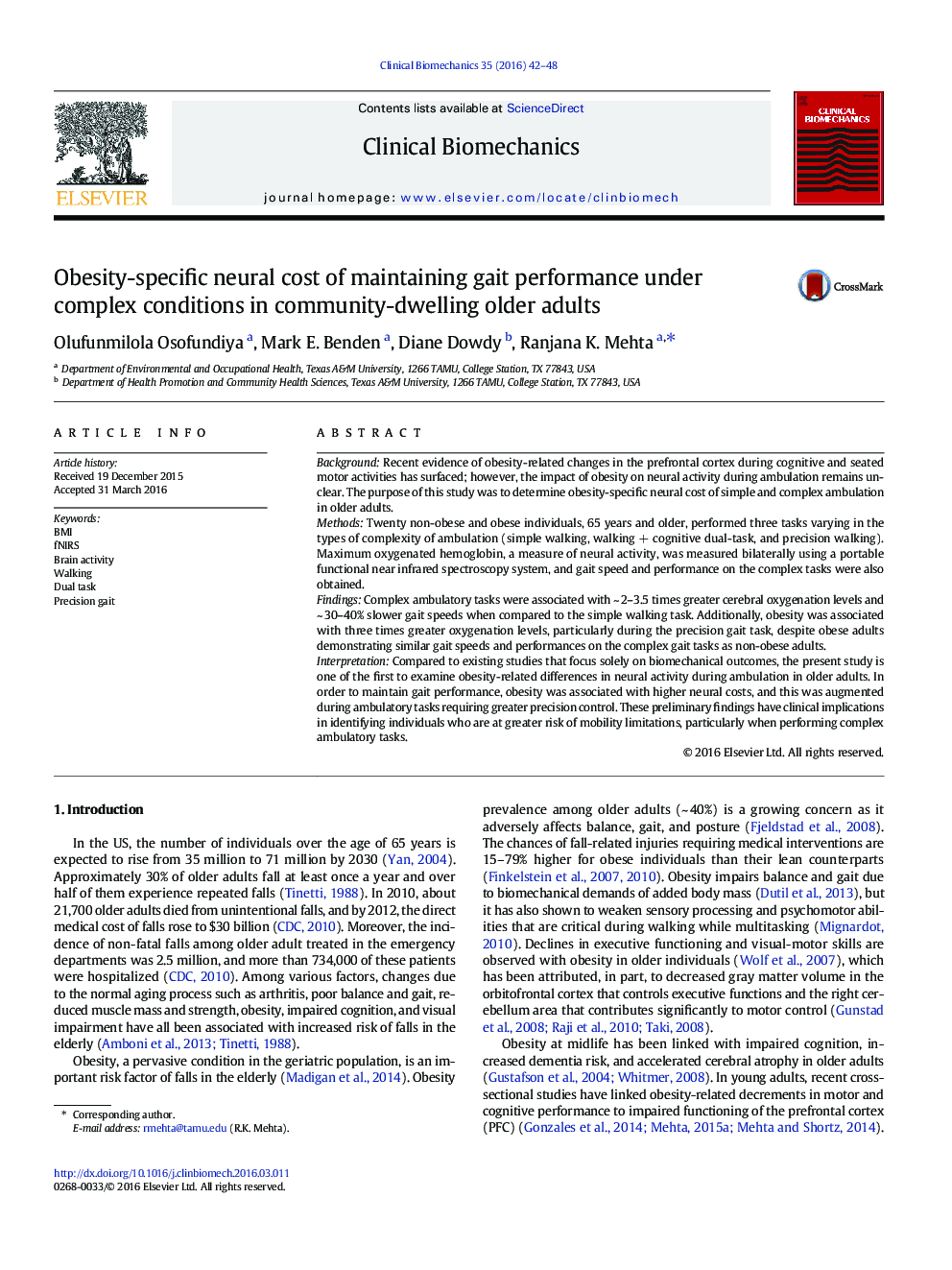| کد مقاله | کد نشریه | سال انتشار | مقاله انگلیسی | نسخه تمام متن |
|---|---|---|---|---|
| 4050107 | 1603743 | 2016 | 7 صفحه PDF | دانلود رایگان |
• Obesity-specific neural cost of simple and complex gait was tested on older adults using fNIRS.
• Complex gait was associated with higher neural costs and slower speeds.
• Obesity was associated with three times greater neural cost, particularly during precision gait.
BackgroundRecent evidence of obesity-related changes in the prefrontal cortex during cognitive and seated motor activities has surfaced; however, the impact of obesity on neural activity during ambulation remains unclear. The purpose of this study was to determine obesity-specific neural cost of simple and complex ambulation in older adults.MethodsTwenty non-obese and obese individuals, 65 years and older, performed three tasks varying in the types of complexity of ambulation (simple walking, walking + cognitive dual-task, and precision walking). Maximum oxygenated hemoglobin, a measure of neural activity, was measured bilaterally using a portable functional near infrared spectroscopy system, and gait speed and performance on the complex tasks were also obtained.FindingsComplex ambulatory tasks were associated with ~ 2–3.5 times greater cerebral oxygenation levels and ~ 30–40% slower gait speeds when compared to the simple walking task. Additionally, obesity was associated with three times greater oxygenation levels, particularly during the precision gait task, despite obese adults demonstrating similar gait speeds and performances on the complex gait tasks as non-obese adults.InterpretationCompared to existing studies that focus solely on biomechanical outcomes, the present study is one of the first to examine obesity-related differences in neural activity during ambulation in older adults. In order to maintain gait performance, obesity was associated with higher neural costs, and this was augmented during ambulatory tasks requiring greater precision control. These preliminary findings have clinical implications in identifying individuals who are at greater risk of mobility limitations, particularly when performing complex ambulatory tasks.
Journal: Clinical Biomechanics - Volume 35, June 2016, Pages 42–48
